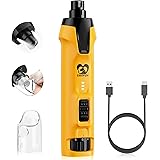The journey of feline companionship is incredibly rewarding, yet it is understood that certain behavioral challenges can emerge, particularly concerning litter box habits. While the accompanying video provides an excellent introductory guide to **cat litter box training**, it is important to delve deeper into the nuances of feline elimination behavior and the strategies that yield consistent success. A significant portion of domesticated felines inherently adopt litter box usage from their mothers during early development. However, circumstances such as recent adoption of a stray or feral cat, or even inexplicable regressions in a well-trained pet, necessitate a comprehensive understanding of effective training protocols and troubleshooting techniques. Addressing these challenges proactively ensures both the cat’s well-being and harmonious household integration.
Understanding Feline Elimination Behavior and Litter Box Training
Feline elimination behavior is deeply rooted in instinct. Cats are naturally fastidious creatures, preferring to bury their waste to mask their presence from predators and prey alike. This innate drive is the foundation upon which successful **cat litter box training** is built. When a cat deviates from appropriate litter box use, it is often a signal indicating underlying issues, which can range from environmental factors to medical conditions. Inappropriate urination, known clinically as periuria, is a common reason for veterinary consultations and a primary cause for cats being surrendered to shelters. Reports suggest that a significant percentage of house-soiling cases have a medical basis, underscoring the importance of a thorough veterinary examination before concluding that a behavioral problem is the sole cause.
For cats that are newly introduced to a home, particularly those with unknown backgrounds, the concept of a designated indoor toilet may be entirely foreign. It is during this transitional phase that careful intervention is most critical. A structured approach, which includes positive reinforcement and environmental optimization, must be implemented. Patience is paramount, as the establishment of new routines and preferences can require sustained effort. The goal is to create an environment where the litter box is the most attractive and comfortable option for elimination, thereby reinforcing natural feline tendencies.
Strategic Litter Box Placement: Optimizing Accessibility and Comfort
The strategic placement of litter boxes is a cornerstone of effective **cat litter box training**. While the video rightly suggests observing where a cat naturally eliminates and placing a tray there, a broader understanding of feline preferences is beneficial. Cats exhibit a strong preference for privacy and security during elimination; therefore, high-traffic areas, noisy locations, or spots near appliances that can startle them are generally avoided. It is often recommended that litter boxes be placed in quiet, easily accessible locations where the cat feels safe and unthreatened. Research into feline environmental needs emphasizes the creation of “safe zones” where vital resources, including litter boxes, are readily available.
Furthermore, the “N+1 rule” is widely advocated by veterinary behaviorists: provide one litter box per cat, plus one additional box. This ensures that sufficient options are available, minimizing competition or stress in multi-cat households. These boxes should be distributed throughout the home rather than clustered in a single area, especially in larger residences or multi-level homes. Consideration should also be given to proximity to food and water bowls; most felines instinctively avoid eliminating near their dining areas. This spatial separation respects their natural instincts and contributes to the overall cleanliness and hygiene of their living space.
The Science of Substrate: Selecting the Optimal Cat Litter
The type of litter used is a critical, yet often underestimated, factor in successful **cat litter box training**. As highlighted in the video, cats can develop strong preferences for specific litter substrates, and an unsuitable choice can lead to litter box aversion. Studies on feline substrate preferences indicate that many cats show a marked preference for unscented, fine-grained, clumping clay litter. This preference is often attributed to the texture, which mimics natural outdoor substrates, and the lack of strong perfumes that can be off-putting to a cat’s highly sensitive olfactory system.
Experimentation with different litter types is frequently necessary to identify what a cat finds most appealing. Options range from traditional clay (clumping and non-clumping) to silica gel, recycled paper, wood pellets, and even corn-based litters. Each presents a unique tactile experience for a cat’s sensitive paw pads. For instance, some cats may find coarse or dusty litters uncomfortable or irritating. Moreover, the litter’s absorbency and odor control capabilities are crucial. A litter that retains moisture or poorly neutralizes odors can quickly become unpleasant for a cat, leading them to seek alternative, cleaner spots for elimination. It is generally recommended that a depth of approximately 3 to 4 inches of litter is maintained, providing ample material for digging and burying, which aligns with their natural behaviors.
Exploring Litter Box Enclosures: Hooded vs. Open Systems
The design of the litter box itself also plays a significant role in a cat’s willingness to use it. The choice between an open litter tray, a hooded (covered) box, or even a top-entry design often comes down to individual feline preference and owner practicality. The video touches on the benefits of hooded trays for containing litter splatter and providing privacy, and also mentions top-entry designs for similar reasons.
Open trays are often preferred by cats who feel vulnerable in enclosed spaces, or by those with respiratory issues, as they allow for better airflow and reduce the concentration of ammonia. Conversely, hooded boxes can offer a sense of security and privacy that many cats appreciate, replicating a den-like environment. However, some cats may find them too confining or the accumulated odors within a hooded box to be too intense. Top-entry boxes, with their vertical design, are often favored by owners for their ability to significantly reduce litter tracking and prevent dogs from accessing the contents. Yet, their higher entry point may present a challenge for senior cats, kittens, or those with mobility issues, such as arthritis. When selecting a litter box, it is often advisable to consider the cat’s age, physical capabilities, and behavioral tendencies.
Reinforcing Positive Feline Habits: The Role of Encouragement
Effective **cat litter box training** heavily relies on positive reinforcement. Punishing a cat for inappropriate elimination is counterproductive and can exacerbate behavioral problems, fostering fear and anxiety rather than promoting desired habits. Instead, the focus should be on rewarding appropriate behavior. When a cat uses the litter box, immediate verbal praise, gentle petting, or a small, desirable treat can create a positive association with the act. This method strengthens the connection between the litter box and a pleasant experience.
Observational learning also plays a role, especially for kittens or newly adopted cats. Gently placing a cat into the litter box, particularly after waking or eating when elimination is common, can serve as a gentle reminder. Once inside, allowing them to investigate and dig naturally without interference is crucial. Consistency in praise and maintaining a pristine litter box environment are key to reinforcing these positive habits. The objective is to make the litter box an inviting, comfortable, and stress-free part of their daily routine, leading to long-term success in appropriate elimination.
Recognizing Red Flags: When to Consult Your Veterinarian
While most instances of inappropriate elimination can be resolved through careful **cat litter box training** and environmental adjustments, it is critically important to recognize when a problem warrants veterinary attention. As stated in the video, any signs of straining, discomfort, or deviation from normal toileting patterns necessitate immediate consultation with a veterinarian. These symptoms could indicate underlying medical conditions, such as urinary tract infections (UTIs), bladder stones, interstitial cystitis, kidney disease, diabetes, hyperthyroidism, or even orthopedic issues like arthritis that make entering a litter box painful.
A veterinarian will perform a thorough physical examination and potentially diagnostic tests (e.g., urinalysis, blood work, X-rays) to rule out medical causes. If medical issues are identified, appropriate treatment can be initiated, often resolving the elimination problem. Should medical causes be ruled out, a veterinary behaviorist or a certified applied animal behaviorist may be recommended. These specialists can offer in-depth analysis of behavioral factors and help develop tailored strategies to address the complex aspects of feline house soiling, further solidifying effective litter box training practices.









